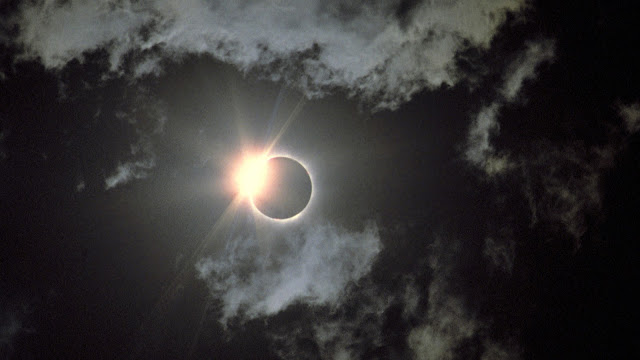It’s been said that if you knew it all you’d go crazy.
Just think of all there is to know – everything from the
exact amount of pi,* to the last time your neighbor went to the bathroom; the
bloom time of each and every daffodil, to the time of the next eclipse; from the
function of the microorganisms in your body, to what’s in the center of a black
hole. Questions abound about the esoteric, the ecclesiastic, the
extraterrestrial, and the down-to-earth. There is just too much to know.
Well, there’s one thing there that might prove to be
interesting: the time of the next eclipse. In addition to the time, it is
always helpful to know where the show is going on. Every eclipse can’t be seen
everywhere, but this August we South Carolinians are in luck. All North
Americans will be able to see at least a partial eclipse, but a very short ride
south of Sun City Carolina Lakes will take us to the path of totality.
The last path of solar totality that included any part of
the United States, mostly the north-westernmost states, was back in 1979. Where
were we 38 years ago? The next two will be in 2024 and 2044, and they, and many
of us seniors, won’t be within hundreds of miles from here.
The small town of Hopkinsville, Kentucky, is calculated to
be the place to view absolute
totality on August 21. The locals there will benefit outrageously from this free,
passing natural phenomenon. Scientists, and gawkers and folks who just must be
a part of such events, have commandeered and booked solid every available room,
campsite, and RV spot for miles around. They’ll take hours and even days to get
there to witness a totality show that will last for 2 minutes and 40 seconds,
give or take a nanosecond or two.
From the first bite out of the sun to the last, the partial
eclipse, the one that can be seen from here will last almost three hours,
starting at just after 2:15 p.m. The total eclipse can be seen if you
travel just south of here, say to somewhere along I-77 south of Exit 41, to
just south of where I-77 and I-26 meet. You might want to drive down and pull
off the highway anywhere down here. Better yet, totality will be seen in the
many small urban parks in Columbia and Greenville, at the Riverbanks Zoo and
Gardens, at Congaree National Park, in Manchester State Forest, and further
afield in places like the South Carolina Botanical Garden at Clemson, or the
Nantahala National Forest.
Don’t think that you’ll be the only ones smart enough to
pick your preferred viewing spot. Pack a picnic lunch and get there early.
Check the eclipse path on line and check the times for your chosen spot. Above
all, be sure to be equipped with the proper eye protection for viewing. On-line
sources like Amazon have them already.
*which we now know to be infinite – but perhaps knowable


No comments:
Post a Comment